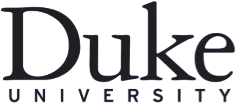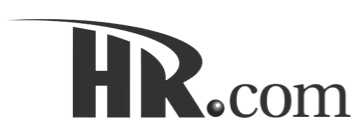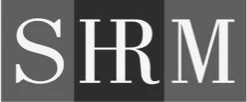HR Compliance & OperationLegal & Regulatory
Find Your Footing in the Shifting AI Regulatory Landscape
TABLE OF CONTENTS
Key Talking Points in This Article:
- Pinpoint high-risk AI systems in minutes
- See how new AI legislation already shapes daily HR workflows
- Understand the biggest compliance threats AI poses to HR
- Discover practical ways HR can thrive amid the artificial intelligence revolution
Organizations everywhere depend on artificial intelligence to simplify tasks, make better decisions, and uncover new ways to manage business challenges. In human resources (HR), these advancements offer significant benefits. AI tools now scan thousands of résumés in seconds, flag flight-risk employees before they resign, and surface hidden talent trends that drive smarter workforce planning. At the same time, the AI regulatory landscape is expanding rapidly, and leaders must be prepared for new rules on fairness, data handling, and accountability.
Experts in the HR space have emphasized the need for business leaders to place greater importance on how AI regulation may impact their organizational reputation or the rights of employees. When high-risk AI systems or analytics tools cause unfair outcomes, companies risk lawsuits, loss of public trust, and penalties under the regulation of AI. Recent EEOC guidance and New York City’s Local Law 144, covering automated decision-making tools, underline that risk.
Many HR leaders have found that the use of AI in critical hiring processes must be carefully balanced with ethical standards and transparency. As AI development continues, new methods emerge to refine automated screening algorithms and make them fairer. Moreover, ongoing AI research helps uncover hidden biases and improve data modeling techniques for HR, ensuring that the use of AI does not undermine diversity or employee rights.
Evolving Role of AI in HR and the Need for Regulation
For years, HR teams handled large stacks of resumes, complex scheduling, and fragmented data. Generative AI and natural language processing promises relief by filtering resumes, highlighting top talent, and spotting potential turnover risks. Today’s AI models also match niche skill sets to hard-to-fill roles and recommend personalized upskilling paths-capabilities once reserved for Fortune 500 budgets.
Yet these advantages also create challenges.
“Certain AI systems rely on biased or incomplete training data, which can heighten algorithmic discrimination or mismanage private information. Even when well-intentioned HR staff introduce AI solutions, they might unknowingly favor one demographic over another.”
Lawmakers worldwide are crafting guidelines to better regulate AI as a proactive measure to protect workers from biased or unfair work conditions. In Europe policymakers push for a consistent regulatory framework, while American lawmakers weigh innovation against fairness for employees in their regulatory considerations.
An organization might face demands from both state and local level measures and a federal approach, not to mention regional laws abroad. Recently, the Colorado AI act imposed yearly evaluations of certain HR algorithms, while the Federal Trade Commission (FTC) already reviews potentially deceptive AI tools. New bills in Illinois, New Jersey, and Washington signal a broader U.S. trend toward sector-agnostic oversight.
The growing body of legislation calls for business to implement more comprehensive plans for AI oversight to ensure compliance with the ever-shifting legal landscape.
Classifying and Managing High-Risk AI
Identifying High-Risk AI Systems
High-risk AI systems are those that have a significant impact on careers or overall well-being. As an example, consider an automated tool that eliminates half the resumes before human review. This could dramatically influence many prospective candidates’ job prospects.
“A predictive platform that tries to identify future leaders based on limited data could inadvertently favor one background over another. These cases often violate the spirit of AI regulation if they harm applicants’ opportunities.”
Another key part of a risk-based approach is seeing whether these systems rely on incomplete data that may exclude certain demographics. An HR oversight team may discover that an algorithm only accounts for alumni from a narrow set of schools, creating an inherent bias. In response, teams can adjust the dataset, gather additional information, or ensure that final decisions receive human review This mirrors best-practice guidance as set out in the ISO/IEC 42001, the new AI management-system standard.
How to identify high-risk systems:
- Determine the scope of impact: Check if the AI empowered tool directly affects hiring decisions, promotions, or pay.
- Assess data sources: Review whether the system relies on a narrow dataset or excludes certain demographics.
- Examine past biases: Investigate historical hiring records or performance reviews to see if they reflect unfair patterns.
- Implement human review: Provide opportunities for managers to override or question the algorithm’s recommendations.
Algorithmic Discrimination and Related Risks
Algorithmic discrimination occurs when an automated decision system favors or rejects certain groups based on skewed data or design flaws. For example, if a historic hiring record emphasizes only certain universities, a newly deployed platform might follow suit.
Even if AI developers had no intention to discriminate, the consequences can be the same. Discriminatory challenges may arise with automated decision-making systems that rank candidates when biases are hidden in company records. Under the European Union AI Act, such tools sit squarely in the high-risk category and trigger mandatory conformity assessments.
In many cases, HR teams run trial scenarios to check whether these systems unfairly penalize protected groups. If problems surface, the company might adjust the training data, modify weighting factors, or enforce a final human check. These steps reduce legal risks and create a fair environment.
AI Regulatory Reform Impacting the Field of HR
The European Union’s AI Act
One of the broadest examples of AI legislation is the European Union’s AI Act, commonly referred to as the EU AI Act. It groups AI systems by potential harm, with special controls for high-risk AI systems. HR functions, like automated applicant screening, often fall under those labels.
Essential parts of the AI Act include performance accuracy, bias mitigation, and a risk-based approach for extra checks.
“Companies doing business in the EU must also ensure their training data is broad enough to avoid bias against certain genders or ethnic groups.”
By promoting trustworthy AI, the AI Act encourages openness about how machines influence careers. To comply, many HR teams set up AI boards and re-examine AI models if results appear skewed. Failure to conform can lead to fines or legal battles.
Federal Legislation in the United States
The US currently lacks comprehensive federal legislation on AI regulation in HR. However, proposals aim to standardize guidelines nationwide. Agencies such as the FTC already investigate AI-related misconduct, yet HR leaders seek clearer standards.
A future AI bill could set requirements for employee notifications, data protection, and monitoring of high-risk AI platforms, especially in critical infrastructure sectors like healthcare. Many organizations are already updating processes to demonstrate readiness when the federal government finalizes rules.
State-Level Measures
At the state and local level, the Colorado AI Act addresses automated decision-making technology in hiring or promotion. This law demands annual bias assessments and direct candidate notification. Failing to meet local standards or ignoring guidance from the California Privacy Protection Agency under the California Consumer Privacy Act can erode credibility.
Strategic Guidance for AI Governance
Responsible AI Innovation and Oversight
Modern HR departments focus on AI governance that encourages just outcomes. This means implementing procedures, so AI solutions benefit the company without discriminating. A dedicated AI board or working group reviews new tools, the data used, and model limits.
If red flags appear, like unexplained bias, leaders can pause deployment until the concerns are addressed.
“Commitment from executives is crucial here: a culture that prizes fairness can empower HR teams to conduct deeper audits. “
Data Practices and Transparency
Data quality is vital for every AI system, so flawed or incomplete data can yield unfair results. Many businesses define risk management policies that govern access, versioning, and audits. Transparency also matters, employees should know when automated decision-making tools influence pay or performance.
Organizations may need to consider the following to strengthen transparency:
- Establish clear data protocols: Define who has permission to collect and edit HR data and create logs to track these changes.
- Conduct routine accuracy checks: Schedule regular inspections to confirm data is up to date and free of errors.
- Disclose AI involvement: Inform employees when automated methods are used to evaluate performance or set pay levels.
- Offer ways to appeal: Ensure workers have a channel to challenge or clarify decisions made by AI-driven tools.
Transparency in Generative AI
Forward-thinking HR teams also watch for new AI applications that simplify administrative tasks, from scheduling interviews to monitoring engagement. Generative AI streamlines HR drafting tasks but can inject bias. Many firms mandate a human editor before publication.
“As privacy rules expand, there may also be mandates to label certain AI-generated content, so leaders should remain ready to prove how such text was created.”
Emerging tools such as facial recognition add complexity. While they can improve security, they also raise concerns about privacy, requiring companies to confirm ethical use.
Industry Collaboration and Future Outlook
The global nature of AI worldwide makes it tough for individual firms to keep up. Many partner with AI developers or universities to address algorithmic discrimination and privacy. These collaborations often result in more reliable AI solutions customized to HR demands.
Some enterprises also join forces with a government agency or leading groups to shape proposed legislation. Participating in these dialogues allows companies to share real-world insights and promote workable rules.
General Purpose Models and Standardization
A number of AI models in HR use broad, general-purpose AI models that can be adapted for screening resumes or gauging employee sentiment. Techniques like natural language processing and machine learning raise questions about reliability and impartiality. Organizations such as the National Institute of Standards and Technology (NIST) aim to guide employers in choosing high-quality AI systems.
By establishing consistent standards, HR managers more easily detect potential issues. If a model meets recognized criteria for accuracy and fairness, the use of AI becomes less risky. Common benchmarks also help smaller organizations lacking big data teams. They can be confident that vendors meeting the guidelines uphold essential ethics.
Keeping Pace with Future Regulations
As the AI regulatory landscape expands, businesses need flexible strategies to keep up with new rules. Many experts predict that nationwide legislation may soon unify or simplify patchwork policies, while local rules evolve to demand regular audits or public disclosures. Compliance in the future will entail progressively more reviews of AI systems and training for HR specialists who implement them.
Some organizations create AI offices to monitor shifting requirements and coordinate responses. These teams focus on tracking changes to current artificial intelligence legislation or demands from the federal government. By anticipating shifts, companies can adapt calmly rather than scrambling at the last moment.
Balancing Fairness, Compliance, and Innovation
Today’s AI regulatory landscape is no longer optional for HR departments. HR teams should identify high-risk AI systems early, apply a risk-based approach, and verify diverse data coverage
“Regulators worldwide expect more transparency and fairness in high-risk processes such as hiring and promotions.”
Well-managed artificial intelligence AI can help organizations stand out as AI companies deliver new tech. By combining ethical principles, thorough audits, and cautious reviews of AI-generated materials, businesses harness AI technology that benefits both the company and its workforce, achieving a balance of efficiency compliance, and respect for people.






















